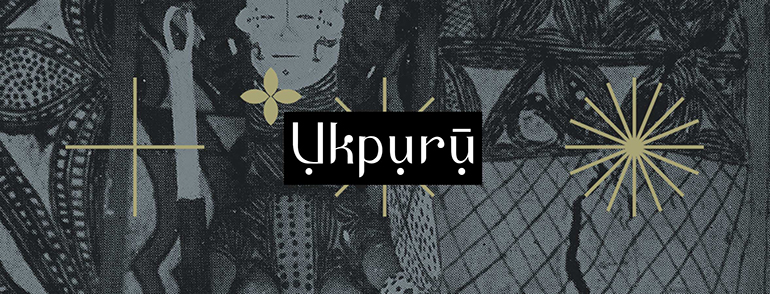
Photo: The Otiri masquerade of Ebiriba (Abiriba), a masquerade, of the Iri Ama festival, that praises beautiful women of the community for gifts. Photographed in the 1930s by G. I. Jones. MAA Cambridge.
Ebiriba (Abiriba) was one of the centres of blacksmithing in the Igbo area. The smiths from Ebiriba were itinerant and had bases outside of their homes in nearby towns like Uzuakoli. The smithing trade was so central to the economy of Ebiriba that ụzụ (smithing) in Ebiriba refers to any sort of long-distance trade.
The settlement of Ebiriba appears to coincide with the general eastward expansion of the Igbo people in the Cross River area. Included in this migration were the Ohafia, Aro, Abam, and Eda and Nkporo people. Like in most parts of the Igbo area, the migrations are very mixed and complex, some moving back on one another. In legend, the Aro, Abam, Ohafia, Eda, and Ebiriba people are said to have links to a progenitor, Eze, who came from Ibeku in today's Umuahia.
The links between Ohafia and Ibeku are well established through a legend recounting Ohafia's departure from Isieke, a village in Ibeku, as well as the rights Ibeku people have in Ohafia as members of the elder settlement and as kin. Customs linking the Ebiriba and other Cross River groups and Ibeku are not as strong. It is, however, likely that these Cross River Igbo groups did migrate from the Ibeku and the general Umuahia area.
The Ebiriba and Aro are linked in tradition as coming from the same migration. All these Cross River Igbo groups backed the Aro militarily during their ascension in the late 17th century; this bond is now popularly known as the Aro Confederacy. The Cross River Igbo groups all have strong connections with non-Igbo Cross River groups.
See: Philip Nsugbe (1974). "Ohaffia: A Matrilineal Ibo People"; John Oriji (1994). "Traditions of Igbo origin".









